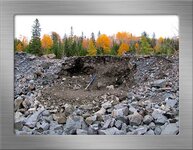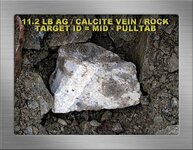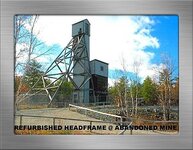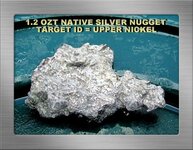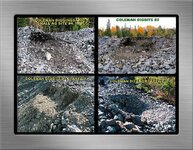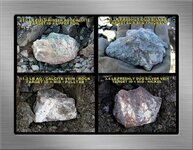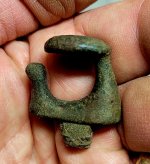Jim Hemmingway
Hero Member
- Jan 26, 2008
- 789
- 1,617
- Detector(s) used
- F-75, Infinium LS, MXT, GoldBug2, TDI Pro, 1280X Aquanaut, Garrett ProPointer
- Primary Interest:
- Prospecting
Recreational Prospecting in the Silverfields
of Northeastern Ontario
of Northeastern Ontario
Introduction
For casual or recreational prospecting enthusiasts with limited time to search for precious silver ores and nuggets each season, metal detecting abandoned minesite tailing disposal areas and former ore transport routes is undoubtedly the most productive strategy to increase the odds of recovering more valuable specimen grade silver as depicted below. Our preference is to select abandoned sites that will more likely produce detectable native silver based on past production numbers. You can detect these sites with the certain knowledge that highgrade silver was inadvertently discarded to the tailing disposal and nearby areas, sometimes in considerable quantity. The probability of successfully recovering such material is sharply improved compared to searching for outback silver float, obscure prospects, or low production sites.
Despite the reality that former high production areas have seen decades of detecting and collecting pressure, and considerable surface silver has been removed, associated silver minerals, mixed ores, and native silver are commonly recovered by hobbyists to this day. But larger specimen grade silver has become more difficult to find and nowadays most surface detectable silver is measured in ounces.
There is no doubt that more and larger material exists as initially deposited, waiting undiscovered just beyond the detection capabilities of most metal detectors, or otherwise is masked by abundant iron and other detectable minerals such as proliferate pyrrhotite at many sites. This is readily evident to those who have experienced detecting fresh surfaces resulting from mechanized bulk ore removal, or from trenching productive ground while systematically recovering all target signals.
The foregoing is not to suggest that the low production sites are necessarily undesirable areas to search. An obvious advantage is that low production sites or prospects see far less detecting pressure than do the more visible high production sites. It depends on how your objectives or goals are defined. If typically lower grade or mixed ore samples from such sites contain even small amounts of native silver, particularly with an attractive dendritic structure and background matrix, these will certainly produce readily marketable cuts or slabs.
To improve the likelihood of finding silver, it is important to be selective about sampling locations at any given site. We are looking for deposits by searching areas most likely to have experienced unintentional dumping of good material. That means areas where valuable silver was handled and transported. Look for indications of surface veins, shafts, and storage areas where silver was graded, moved, and sometimes inadvertently misplaced. There are many plainly visible field indications of former mine buildings, mill sites, abandoned trails and ore transport routes.
While quantities of silver were frequently discarded to tailing disposal areas, keep in mind that some highgrade silver was unknowingly included with waste rock for road and other construction projects. Hobbyists have detected large specimen grade silver that was occasionally lost to spills on steep embankments, washouts, or sharp bends along the transport routes of the time. More information on this subject can be viewed at http://www.treasurenet.com/forums/canada/282315-electronic-prospecting-silver-country.html.
The photo immediately below depicts exposed bedrock on the outer fringe of a former mining camp that we revisited this past autumn. The next photo presents a few examples of small but good quality silver detected at this site in recent years. Most silver recoveries weighed less than one-half ozt, but it was fun MXT and F75 detecting because the signals were fairly abundant and mostly shallow for easy digging. Although small silver isn’t a priority, it is not easy to abandon patches that produce such good quality material in quantity.
Extensive information about abandoned gold and silver mines is available online, and many publications are available to prospective hobbyists. My personal favorites include a series entitled Rocks and Minerals for the Collector authored by Ann P. Sabrina, in association with the Geological Survey of Canada. These publications supply useful information pertaining to abandoned minesites throughout Canada. They provide road guides to accessible collecting locations, a brief history of a site’s mining operations, normally include production numbers for more prominent minerals such as cobalt, lead, zinc, nickel, copper, silver and gold, and usually provide a comprehensive list of mineral occurrences for each site.
With specimen grade silver becoming increasingly difficult to find, it is more important than ever to use metal detectors suitable to the application, to select coil type and size that are appropriate for site conditions, and to avoid using discrimination modes if at all possible. Most readers would take this as an axiom, but we do see inappropriate metal detector designs or excessively large coils used in this area where pyrrhotite and other detectable minerals, abundant iron waste, and miscellaneous modern trash masking silver is problematic at many sites. Rather than review it here, we’ve previously discussed the topic of suitable metal detecting gear for silver hunting in northeastern Ontario in considerable detail at http://www.treasurenet.com/forums/canada/328287-electronic-prospecting-silver-country-part-2-a.html.
Below is a bit of plate silver detected with a White’s MXT 300 in the motion all-metal prospecting mode. The prospecting mode’s iron probability, numerical target ID indicator, and ground phase readouts add a lot of interest and fun to rockhunting, but it doesn’t influence our target evaluation routine insofar as overburden must be removed to acquire a strong target signal. If there is any doubt about the target ID, it must be dug to learn what produced the signal. No treatment was required for this sample other than a quick buff with the rotary tool, followed by a soapy wash and rinse.
Some Background Information for Prospective Hobbyists
Native silver ranging up to 95% purity, acanthite, pyrargyrite and proustite ruby silvers, stephanite, and other collectable silver minerals primarily occur in carbonate veins in association with gangue minerals such as quartz, chlorite, fluorite, barite, albite, hematite, magnetite and many other minerals normally related to relatively shallow epithermal deposits. The native silver in this area is intimately associated with major cobalt-nickel arsenide deposits that include collectibles such as safflorite, cobaltite, nickeline, and skutterudite. These minerals will also produce target signals, and their localized mineralizations are an added constituent inherent to the area’s minesite substrates in addition to the usual variable strength magnetic susceptible iron minerals.
Attractively structured native silver in creamy white or other lighter-hued carbonates, or for example in association with other closely related silver minerals, notably for example acanthite and proustite, is highly valued by collectors. Structure refers to how the silver is formed, examples include massive or nuggety formations, plate, disseminate or particulate, sponge, highly crystalline, and various dendritic or branching patterns as depicted in the small example below. This sample was cleaned with a rotary tool silicon carbide bit, followed by a dish detergent wash and clean water rinse.
Silver ores and nuggets found in northeastern Ontario’s silverfields share a similar target ID range to gold, a result of variations in silver purity, type of mineral inclusions, size, shape, structure, and the influence of ground conditions.
Ground conditions normally refer to magnetic susceptibilities associated with various types of iron mineralizations, other localized minerals as noted above, and to substrate type and moisture content. The prevalence of both conductive and non-conductive iron-mineralized hotrocks, the abundance and proximity of rusty manmade iron to silver targets, and the effects of recently disturbed ground resulting from recent mining activity such as mechanized bulk sampling operations, also significantly impact metal detecting for silver ores. In short, do not trust target ID except over strong, obviously non-ferrous target ID signals, and even then larger iron will usually read as a highly conductive non-ferrous target.
The photo below depicts a silver specimen found with a Fisher F75 metal detector. It was operated in the motion all-metal mode that features an enabled target ID while doing some exploratory trenching at a roadside accessible, former high production site. Serious exploration, sampling, and excavation are fundamental to consistent recovery of specimen grade material. Trenching, scraping surface material, or sinking test holes is not for anyone but more determined hobbyists because repetitive digging in rocky substrates is hard work and time consuming. But one way or another, consistently finding worthwhile silver nowadays translates into a lot of digging.
The example below was cleaned with a rotary tool silicon carbide tip followed by a detergent wash and rinse. The photo doesn’t do justice to it, for example you are hard-pressed to discern a quarter-inch silver vein protruding in front by almost an inch. Three-dimensional effects are almost impossible to achieve when shooting from directly in front of the sample.
Searching Iron-Infested Abandoned Minesites with a VLF Unit
We revisited an area that produced multiple silver ores from a limited section of tailings that we later decided to excavate as pictured below. The initial diggings you see in the photo were eventually extended deeper and much further into the tailings because we continued to find silver. To cope with excessive iron trash, we used both a Fisher F75 and a White’s MXT 300 equipped with 10”elliptical coils for routine checking of fresh surfaces. With a few exceptions, the silver recovered in this area has been mostly in the multiple ozt range, but has included some quality material as depicted immediately below the digsite photo.
We had randomly searched the general area in recent years and could pretty much anticipate what to expect. The substrate iron mineral magnetic susceptibilities are variably light to moderate over most tailings that to some extent exhibit surface oxidized iron… nature’s rust limonite… and markedly more elevated over darker minerals such as diabase, but nothing more extreme. There is an overabundance of iron and other trash signals due to several dismantled buildings, a scattering of conductive pyrrhotite hotrocks that produce good signals on both VLF and PI units, and detectable nickeline and cobalt minerals.
These conditions make the MXT’s mid-operating 13.88 kHz frequency, target ID meter, discrimination modes, and particularly the motion all-metal prospecting mode with the iron probability, VDI and ground phase readouts a very good choice. The MXT is ideally suited to this application, and especially so because the most desirable targets weigh ounces and more. The available ultra high gain is not required to detect such material at depth, hence the unit can be operated with good stability in those environs and still be quite effective in the prospecting mode. Most currently available mid-range, prospecting-capable VLF units with different size and type coils available would be similarly appropriate for the search conditions as described.
It is a daunting task to search an area that produces countless iron and other trash signals, especially if you contemplate removing some of the large iron residing close to the surface to improve the odds of finding previously masked, occasionally larger silver at depth. Obviously one does not undertake this task unless reasonably confident that such silver is present, and that requires some knowledge about a specific site. But at the same time, we try to keep in mind that just one large specimen-grade silver ore makes all the hard work worthwhile.
As an alternative to the usual surface scanning in already pounded areas, that will keep you permanently on your knees if you’re intent on clearing away some of the large iron, we sometimes resort to exploratory trenching as illustrated in the above photo. Where possible, we prefer to trench on sloping ground, utilizing gravity to more easily move material and recover targets. Trenching allows us to scan to considerably greater depths where the probability of detecting silver sharply improves when on productive ground. All encountered target signals are investigated and removed, hence there are no worries about iron masking or otherwise overlooking good silver.
There is more to say about identifying sites that at least warrant some limited exploratory trenching or digging selective test holes, or even scraping away surface material, but that discussion will be reserved pending a follow-up article entitled Trenching and Metal Detecting for Native Silver. The specimen grade silver below is just one of many fine examples we’ve found over the years using the above technique.
Despite searching in tough iron-abundant areas, we still prefer to search in the motion all-metal mode where we can benefit from either target ID or its equivalent in the MXT prospecting mode without the depth loss that accompanies discrimination modes when slowly scanning over variable rocky surfaces. Some prefer the MXT relic mode as an option to get the depth benefit of an all-metal mode combined with discrimination capability, but the incessant cacophony of mixed mode honking tones over target-rich ground does not agree with me… a personal preference and nothing more. But frankly, in most prospecting scenarios discrimination modes in any format are not a good idea. We much prefer motion all-metal modes for improved depth and sensitivity to targets and for evaluating ground conditions, and we also prefer unimpeded target-sizing ability to better assess what is happening beneath the searchcoil.
When searching in a motion all-metal mode, over questionable target signals we frequently make use of the auto or fastgrab GB (ground balance) feature available on many modern VLF prospecting-capable detectors. The auto GB feature supplies us with additional information about a target that obviously requires some interpretation based on your detecting experience in these field conditions, and that information can be used in conjunction with target ID and target-sizing when evaluating suspect signals.
In this area for example, a few F75 autograb coil pumps over most rusted iron… a manmade maghemite… that has leached into the immediate surrounding substrate normally lowers GB values from the high GB80s into the more conductive GB40s. This especially applies to small iron and other common items such as rail spikes and large nails. But occasional drill rods, tools, implements, and other larger iron may not react similarly or at all if located sufficiently close to the coil to produce a strong signal.
Non-conductive iron-mineralized positive hotrocks and our conductive pyrrhotite positive hotrocks will also produce variable and frequently steep GB reductions, although larger pyrrhotite will retain its signal similar to iron nails. Nickeline and cobalt minerals normally generate rather dramatic GB reductions, whereas native silver experiences little or no GB reduction as illustrated below. Compare the iron nail fastgrab readout to the silver fastgrab readout, keeping in mind that both produced an iron target ID.
We all encounter areas that are so inundated with blaring signals from small bits of iron trash such as tiny nails and tacks, non-descript shards, and interminable wire scraps that effective detecting in the motion all-metal mode is frustrating or next to impossible. In such conditions we use smaller coils to help with separating target signals, and we make good use of small iron discrimination or minimal / zero discrimination in conjunction with iron tones.
Using iron tones or small iron discrimination will result in overlooking deep silver that occasionally does target ID as iron, but that is the price of convenience. Silver reading as iron can result from recent ore removal operations disturbing the substrate, or for example, from adjacent iron compromising silver’s target ID, but the usual culprit is the magnetic susceptible iron mineralizations present beneath the coil that especially affect deeper target ID. As noted earlier, large iron at any depth frequently reads as non-ferrous and generates an attractive ‘dig me’ audio and target ID.
Individual discrimination preferences vary, but our rationale is that finding any silver while utilizing discrimination / tones beats the heck out of abandoning a trashy site with no silver found. After all, recreational prospecting is supposed to be an enjoyable, rewarding pursuit and not a study in frustration. The above modus operandi accounts for many fine examples of small native silver in our collection as with the nugget depicted below, recovered from a pyrrhotite-infested abandoned trail.
A Tale of Two Target Signals
Prior to trenching or excavating this year, we had initially metal detected near the digsite pictured above and we made a point of removing larger surface iron to improve the odds of locating masked silver. Late one afternoon, an elongated signal, correctly indicated by the MXT’s iron probability readout, proved to be a sizable iron bar that was removed from several inches below the surface. Rechecking the immediate area produced another signal that was slightly offset to one side and perhaps a foot deeper. It consistently read at 20% iron probability, and resulted in the large silver sample you see below. It was a special moment to find it so close to the surface, and to realize that the encouraging audio signal and target ID had been produced by silver. If the iron bar hadn't first been removed, that silver signal would have been entirely masked by it regardless of coil size or type. The overlying shallow iron bar had produced a completely dominant, blaring signal.
The specimen below was HCl acid treated to remove excessive carbonate rock. It was cleaned with a rotary tool silicon carbide bit, followed by a soapy wash and rinse to produce the silver specimen depicted in the following photo. While not exactly a handsome sample because the silver is embedded in a dark blue-grey carbonate matrix, it is a fine example of massively structured dendritic native silver that accounts for much of the sample’s total weight.
A Final Word
A tip of the hat to TreasureNet forum member Prospector Bill, an experienced silver hunter and avid outdoorsperson who has accompanied me on many prospecting excursions to northeastern Ontario’s silverfields and more recently into Quebec’s Laurentian Mountains. Our memories are replete with exploring wilderness areas, electronic prospecting for silver ores, floats, and other minerals, and sharing companionable moments by flickering campfires on cool, starry autumn evenings over steaming pork and beans and hot coffee.
Prospector Bill had not been able to join me until very late in the season this year. To make good use of our available time, we selected a site that has reliably produced quality small silver for many years. To date we’ve also found a half-dozen or so larger specimen grade silver ores there, and more may yet surface. As illustrated below, silver recovery involves moving a fair bit of surface material to access deeper silver just beyond the range of our metal detectors. The work is justified because this site will consistently produce a few small specimens or nuggets up to several ozt in exchange for only a few hours effort.
We had been scraping away the tailings and alternately scanning the fresh surfaces with 10” elliptical coils while operating in motion all-metal modes. I had been working just around a bend and thinking about calling it quits for the day as a swirling snowstorm quickly swept up to us on the exposed hillslope.
Prospector Bill stepped around the tailings, with a rather pleased smile over a new silver recovery held out for me to see. I love the soft gleam of high purity silver embedded in creamy white calcite, so I took the photo above despite it being freshly dug and covered in wet dirt. A handsome find in addition to several other silver specimens recovered in just a few hours of detecting this site. Attached below is a multi-photo depicting some larger silver that we’ve found in the immediate vicinity over the years.
We hope that you have enjoyed this presentation about our native silver and related minerals, and thankyou for dropping around to review it. We realize that northeastern Ontario’s silver country is geologically quite different from what many readers encounter in their respective areas, and we are very fortunate to have reasonably close access to it.
If you have questions about what has been presented here, especially newcomers to the hobby, please don’t hesitate to fire away. No question is awkward or foolish, and we’ll do our best to provide a satisfactory answer. Good luck with your rock and mineral collecting adventures… someday we hope it will be our good luck to meet you in the field.
Jim Hemmingway
December 2016
Last edited:
Upvote
2
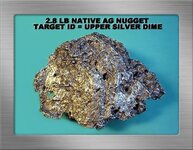
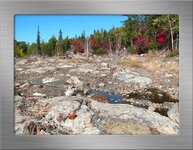
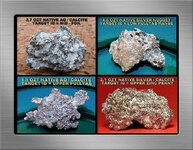
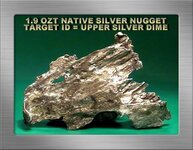
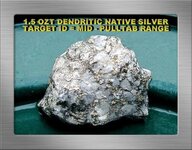
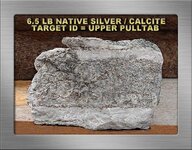
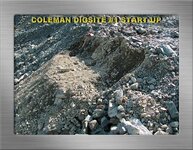
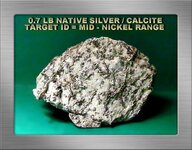
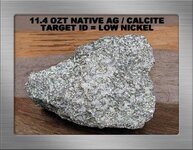
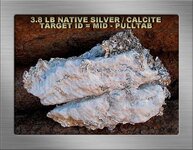
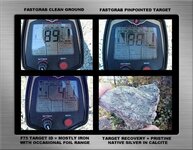
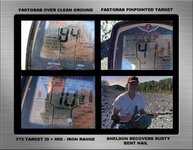
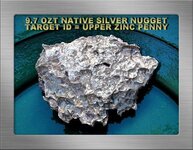
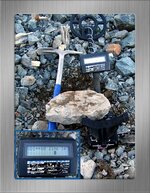
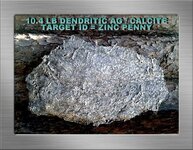
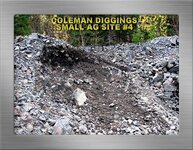
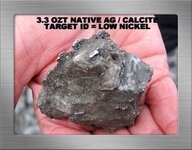
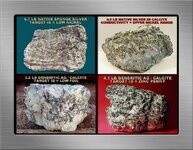


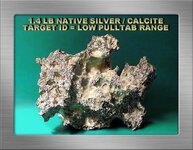


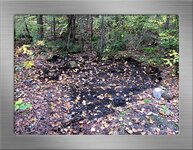
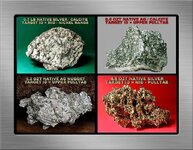
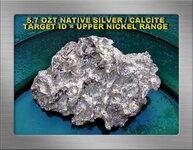
 ....
.... 